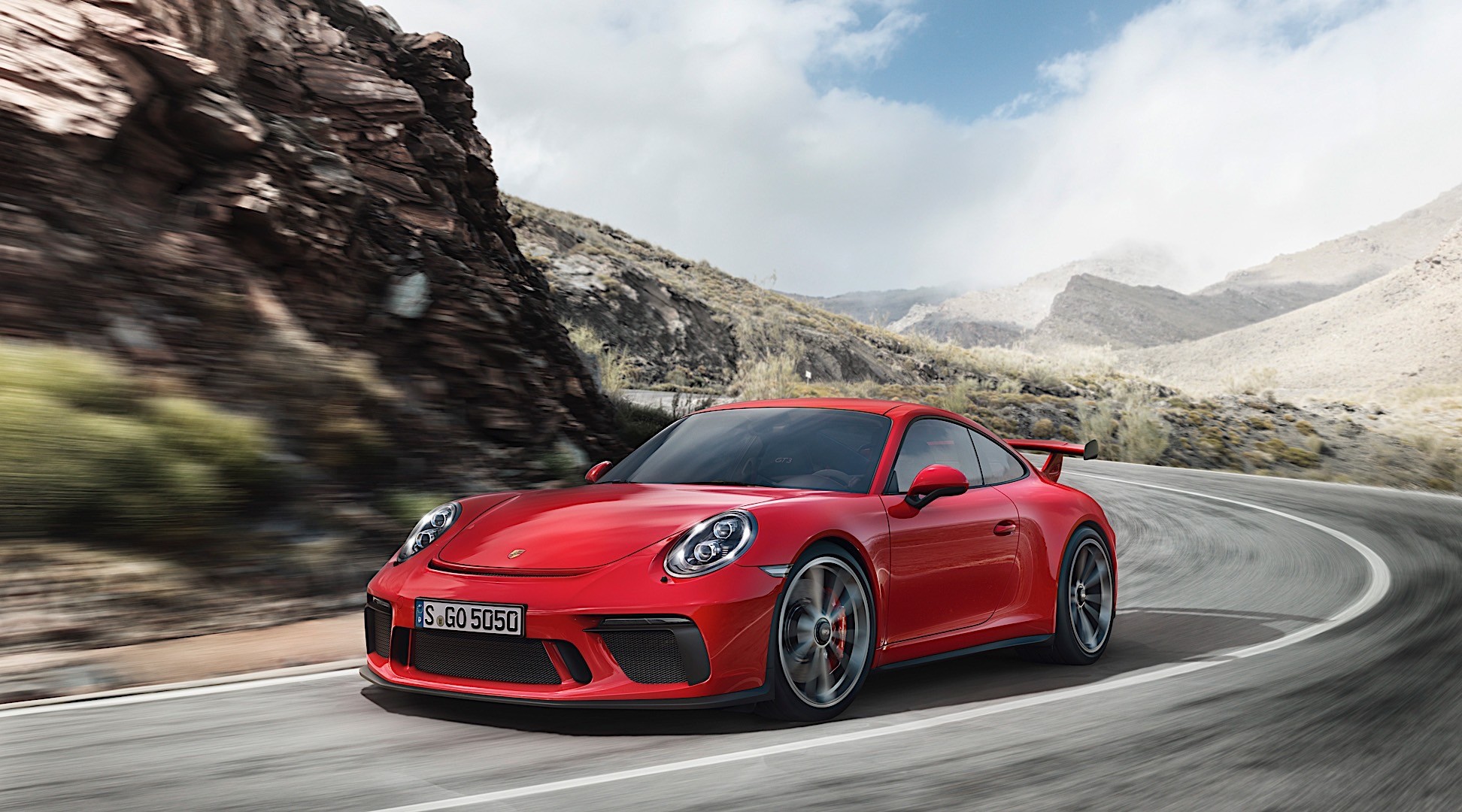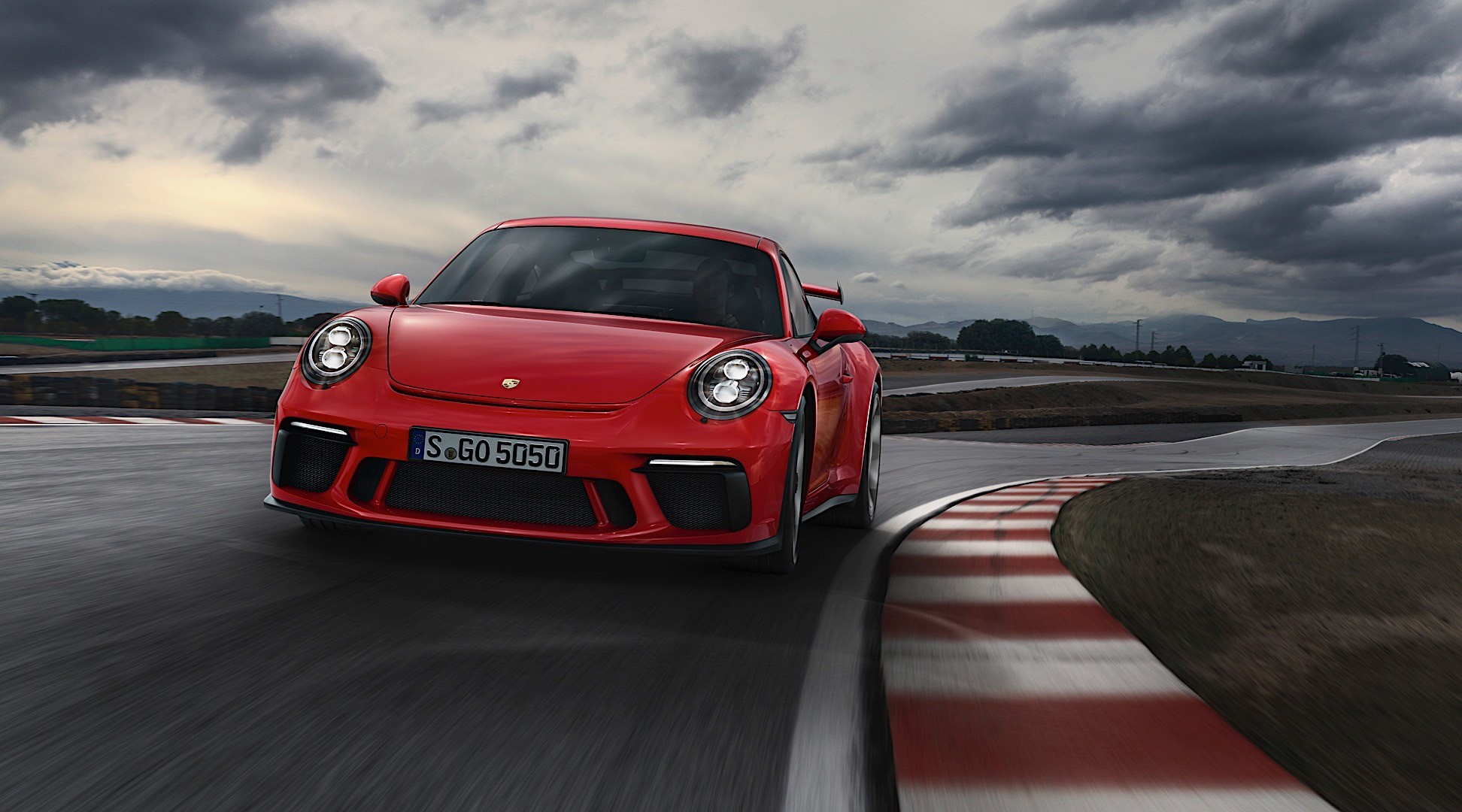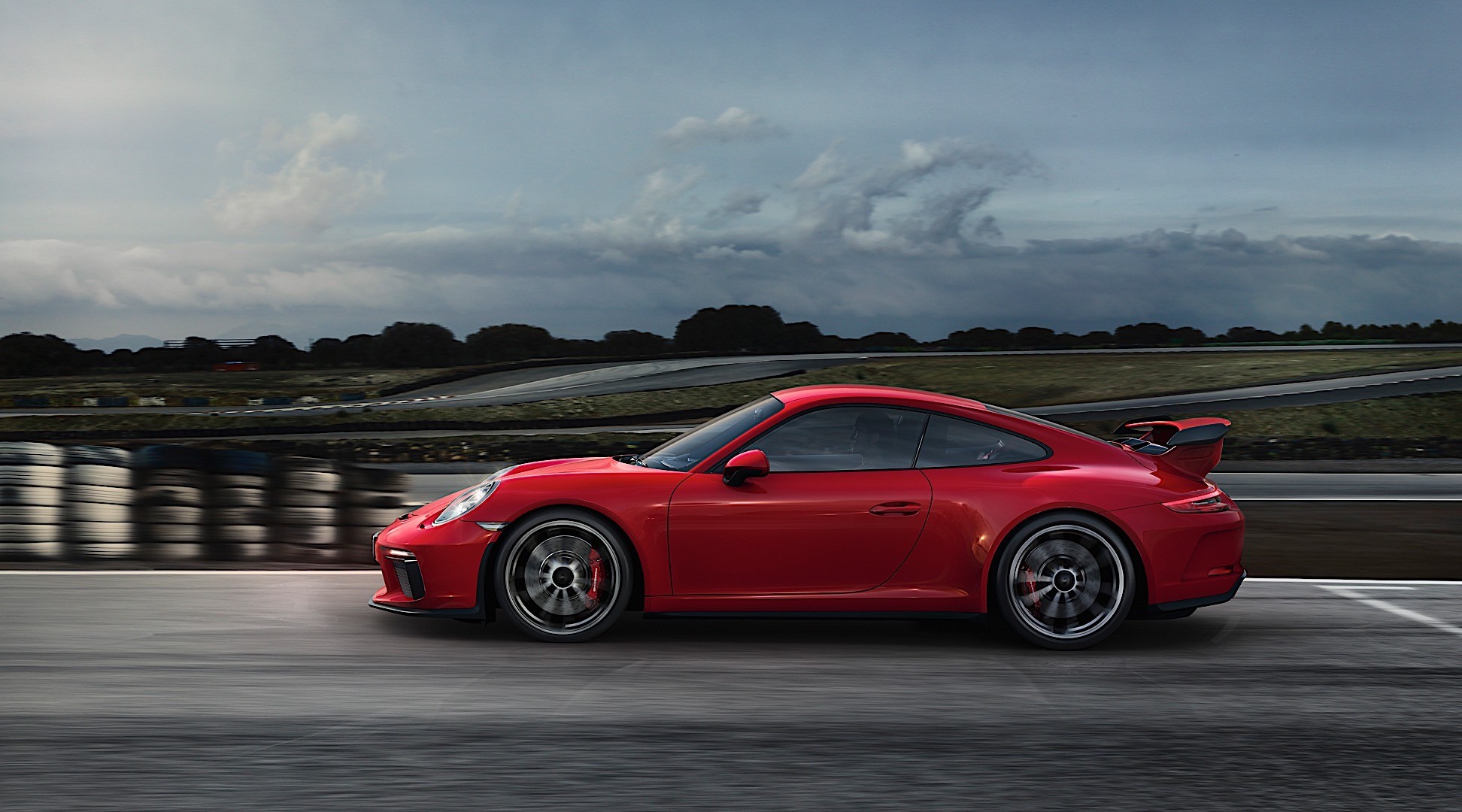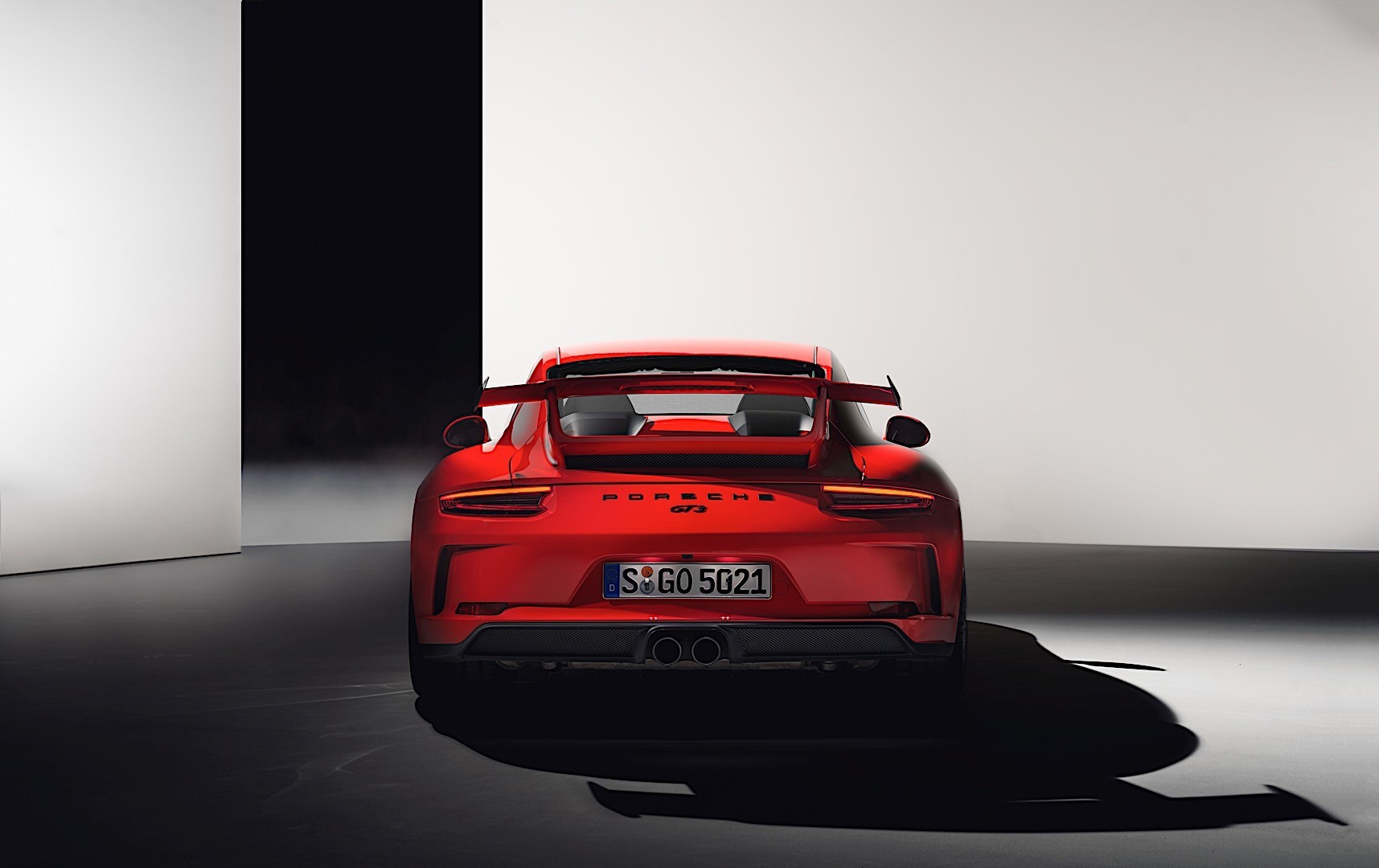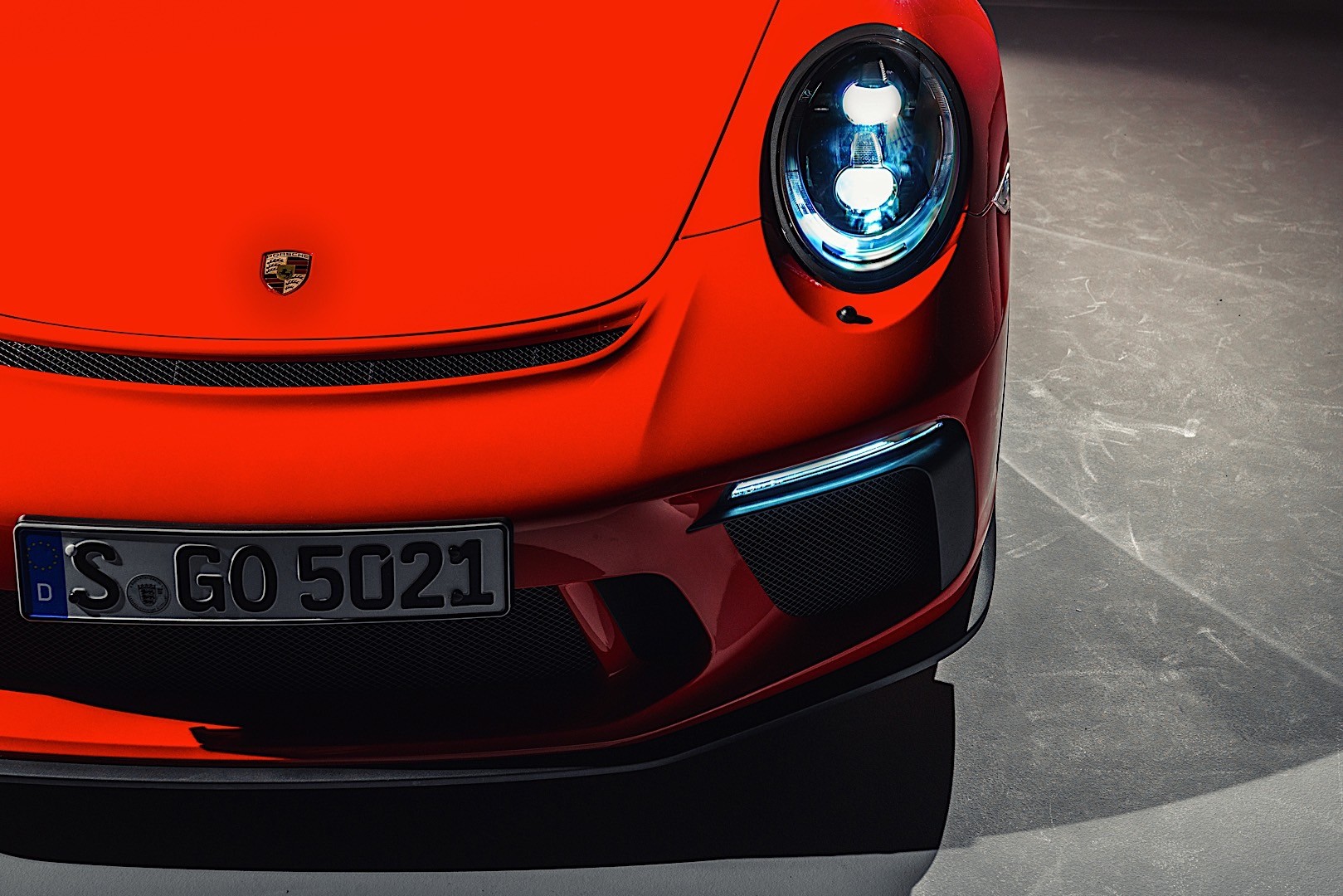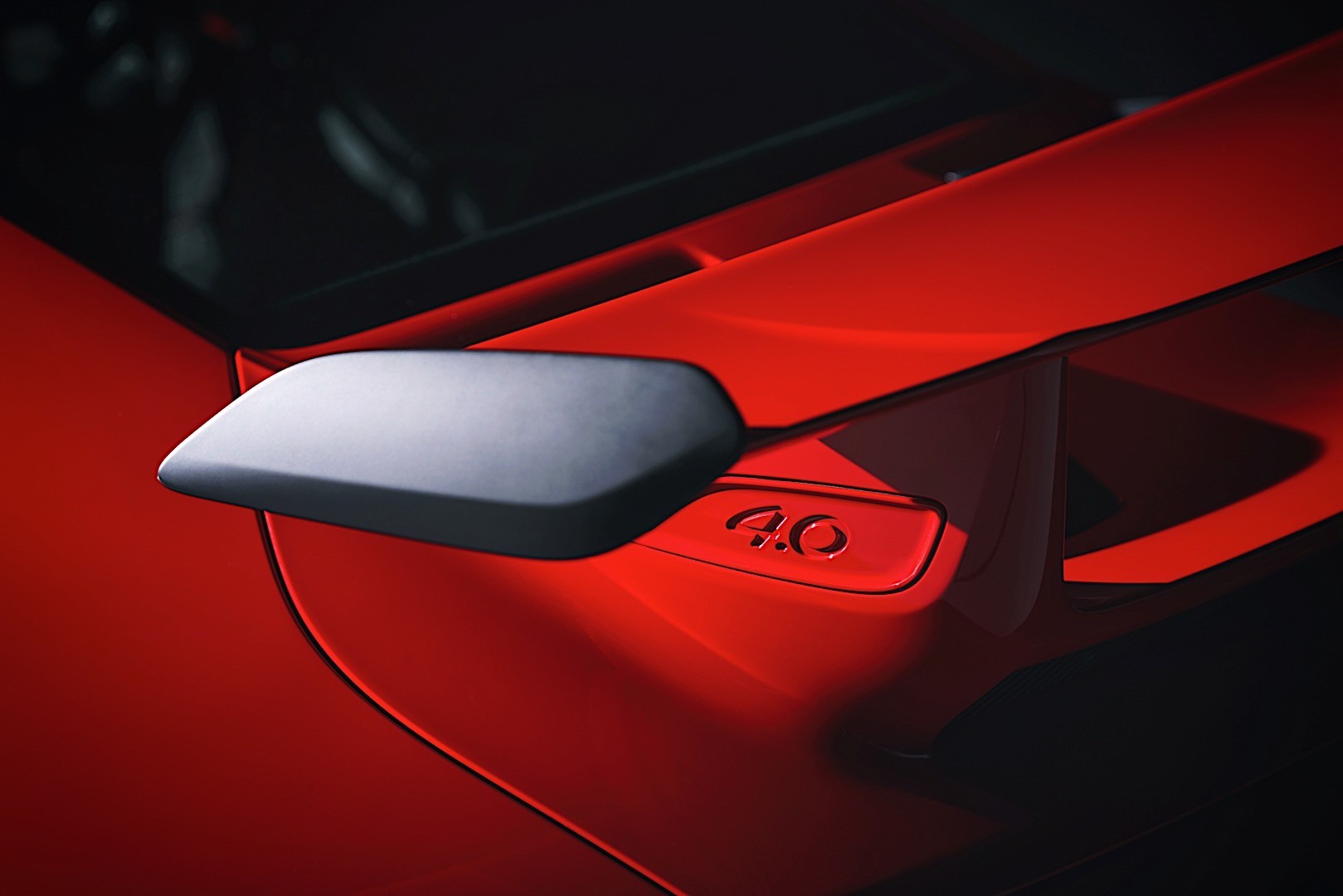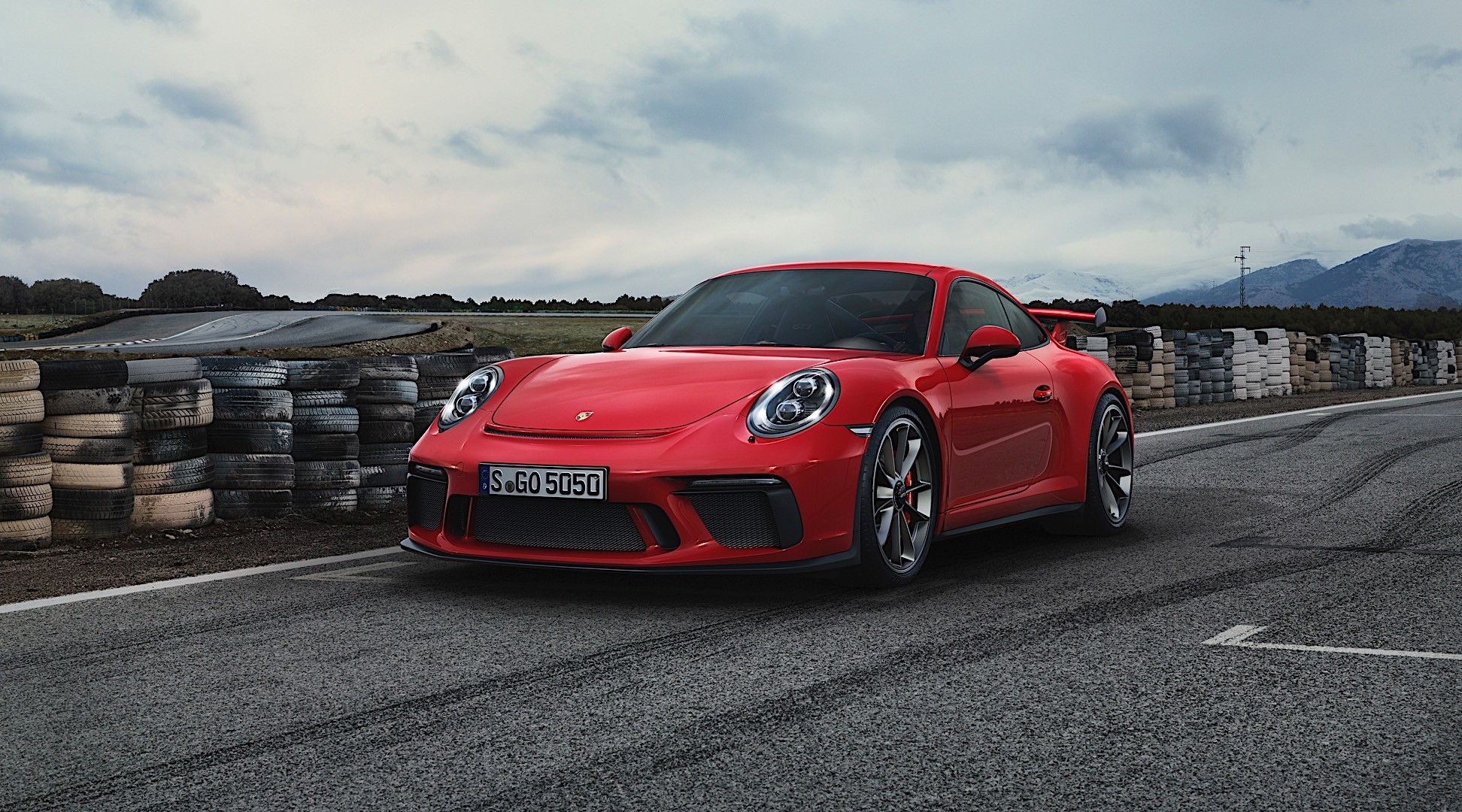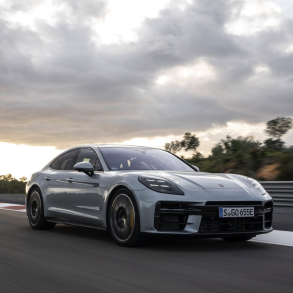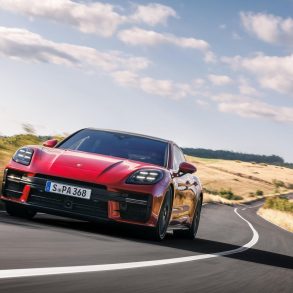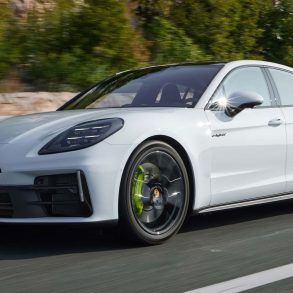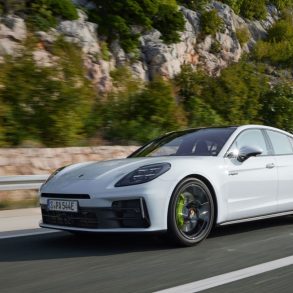(2018 – 2019) Porsche 911 GT3 (991.2) – Ultimate Guide
Date of unveil by Porsche AG: March 7, 2017, Touring version September 11, 2017 / Premiere: March 7, 2017 Geneva Motor Show, Touring version September 12, 2017 IAA Frankfurt Motor Show / World market launch: June 2017
Porsche is definitely busy here at the 2017 Geneva Motor Show. They just recently unveiled their new Porsche 911 GT3 based on the 991.2 facelift model. What’s best about this new Porsche 911 GT3 is that it has manual gearbox. This is definitely something that Porsche enthusiasts will love about this new car since the manual gearbox was not offered with previous GT3 generation.
The new Porsche 911 GT3 carries the same four-litre flat engine from the GT3 RS with its power increased by 25hp for a new total of 500hp. The chassis is also redesigned and now features a rear-axle steering and a lighter construction. The power is routed through 7-speed double-clutch transmission which is the standard option.
The Porsche 911 GT3 type 991.2 comes in at 1,430 kg when its tank is full. Although it is a bit heavier than the previous model, it still manages to reach 0-100km/h in just 3.4 seconds and reach top speeds of 318km/h. What’s more interesting here is that Porsche finally decided to switch back to a 6-speed manual gearbox. Opting for a Porsche 911 GT3 type 991.2 with 6-speed manual gearbox decreases its acceleration reaching 0-100km/h in 3.9 seconds but manages to increase its top speed to 320km/h.
The new Porsche 911 is 25 mm lower than the 911 Carrera S. Its active rear-axle steering makes it much better to handle and depending on the speed, you can steer in the opposite or the same direction as the front wheels which drastically improves the car’s agility and stability.
The aesthetics of the car have slightly changed thanks to a new front facia and front spoiler. Meanwhile, a rear diffusor and new exhaust openings make the rear of the car distinguishable. Inside, you can a new GT sports steering wheel just like the one from the 918 Spyder.
The new 911 GT3 is offered in 3 different seat variants: The adaptive Sports seats Plus with electrical adjustment, sports bucket seats with folding backrest and full bucket seats made from light carbon fibre-reinforced plastic in carbon-weave finish.
In Depth
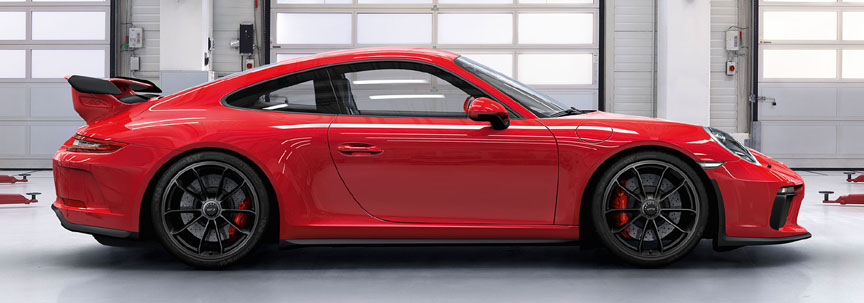
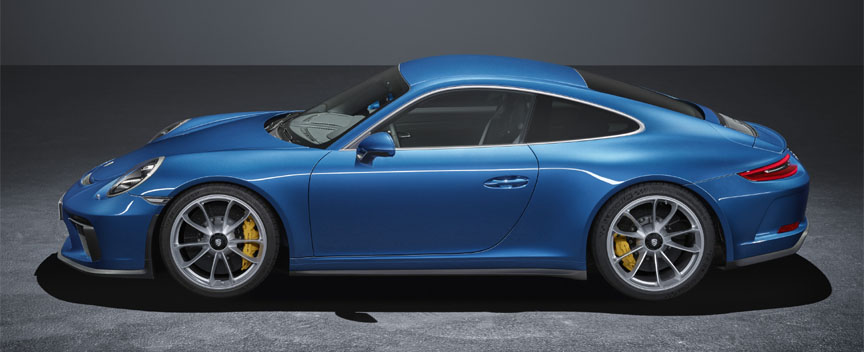
Manual Gearbox
Manual gearbox was back – if not for quicker lap times, then for more fun. The 991.2 GT3 was offered for less than the 991.1 GT3 RS or the 991.1 R. The 991.2 GT3 was not slower than the 991.1 GT3 RS and with manual gearbox it was as cool to drive as the 991 R. It was a bargain! The 991 GT3 4.0 was not the ultimate GT3 as it is heavier without the roll cage than 997 GT3 RS 4.0 was with the roll cage. Remember, the 4-litre 997 GT3 had the same amount of power years and years earlier. Still, the 991 GT3 4.0 was definitely the second best GT3 after the 4-litre 997.
There isn’t too much to write about the 991.2 GT3. While the PDK cars have electronically controlled differential lock, the manual cars have mechanical differential lock (locking 30% on acceleration, 37% on decelaration). The design is from the 991 GT3 4.0 Cup car unveiled a year earlier (minus the Cup rear wing). The 20″ wheels and 380 mm brake discs are from 991 GT3 3.8, the engine is from 991 GT3 R (also used in the 991 R, an internally enhanced version of the 4-litre in the 991 GT3 RS) and the manual gearbox is from the 991 R (which got its gearbox from the 997). The 991 GT3 4.0 speaks for itself!
The touring version
There are many people, especially designers and stylists, who don’t like the vulgar rear wing of the GT3 and prefer the classic side view of the 911 coupé as designer F.A. Porsche put it in the sixties. For the first time the GT3 is available without its huge rear wing. The 991 GT3 Touring version has the electrically erecting rear spoiler from the 991 Carrera, but with a Gurney flap on it to balance out the downforce created by the GT3 front spoiler.
As the Touring version has a lower top speed, this suggests the Carrera rear spoiler with the Gurney flap generates more drag compared to the GT3 rear wing (adjusted to top speed position). Or has the gearbox different ratios? Although manual gearbox offers the utmost Porsche feeling and Porsche driving experience, inexperienced drivers feel clumsy operating the car with a clutch pedal and would prefer an automatic gearbox. The more comfortable Carrera suspension and the rear seats are what would make the Touring version perfectly bridge the gap between the 331 kW Carrera WLS and the 368 KW GT3…
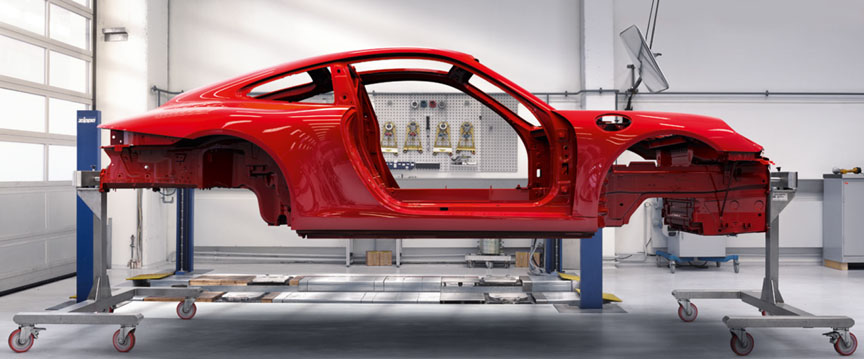
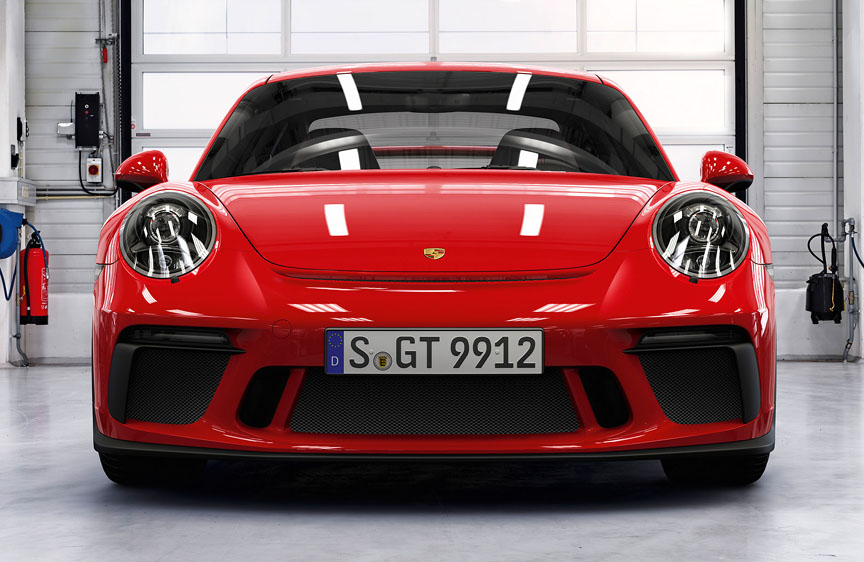
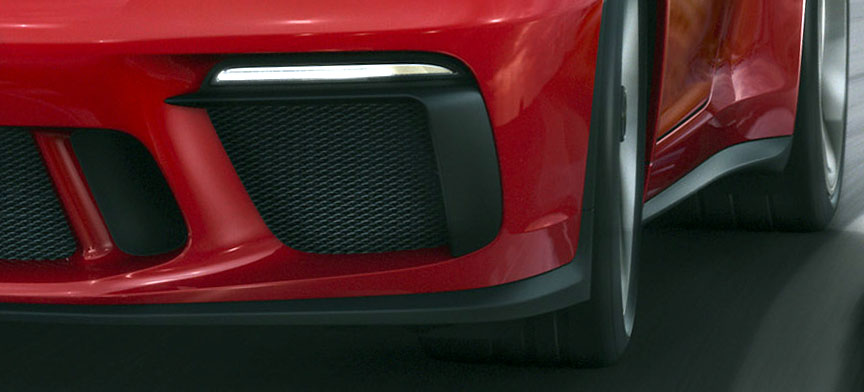

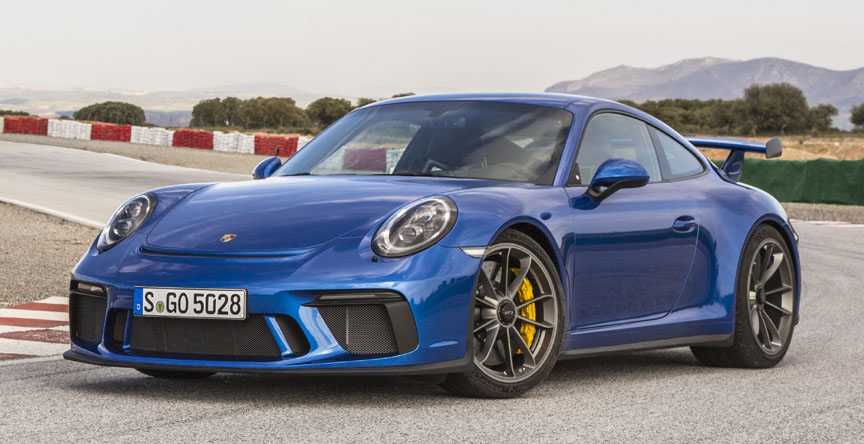
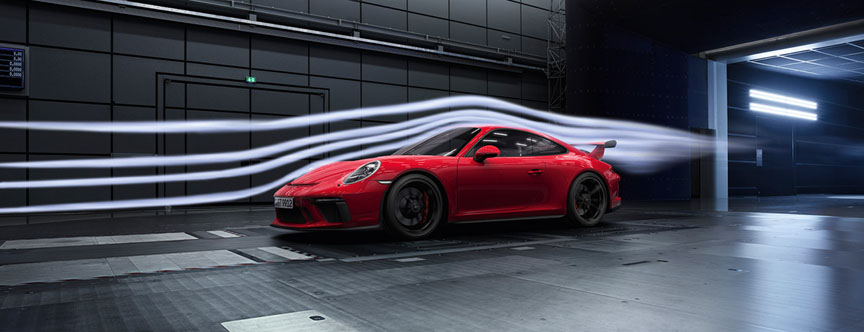
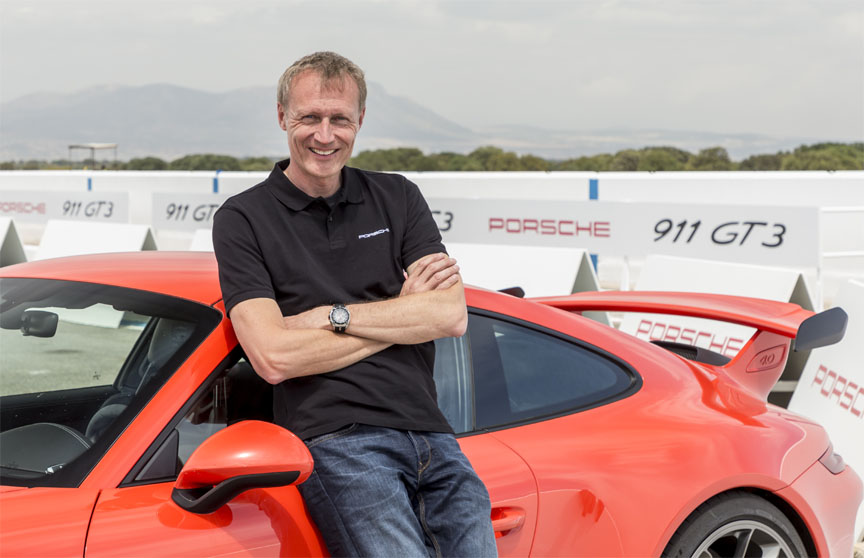
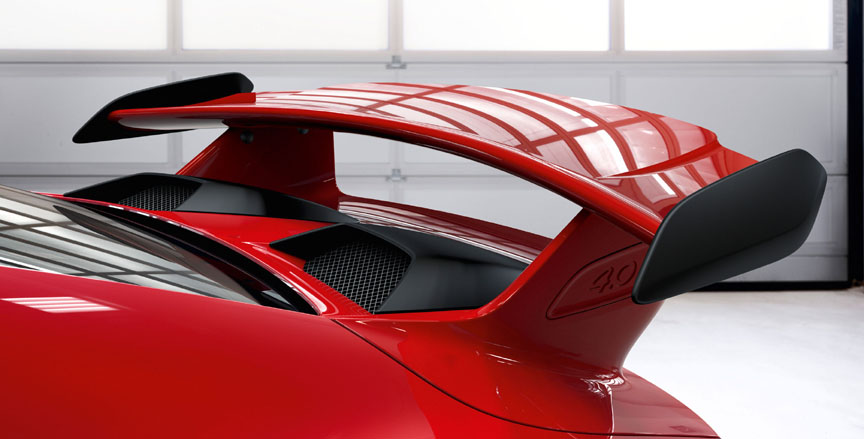
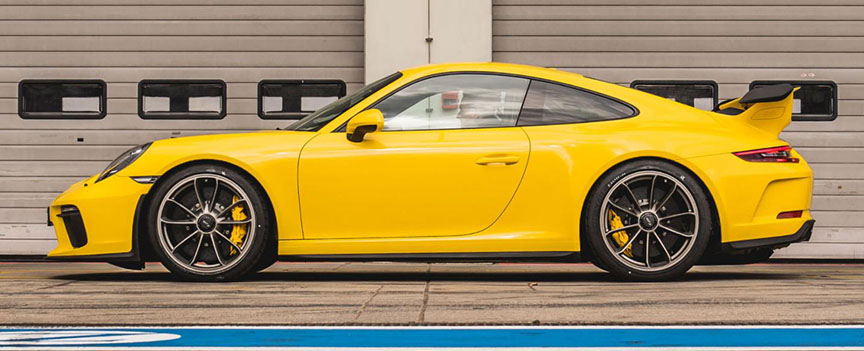
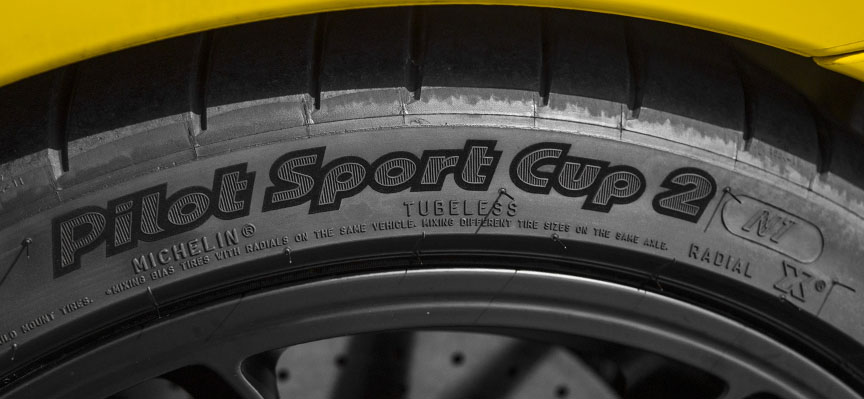


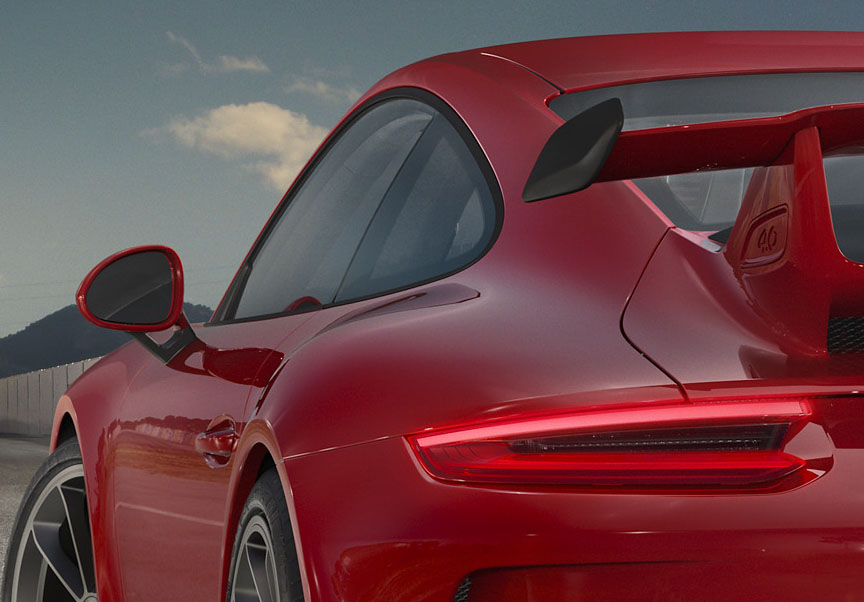
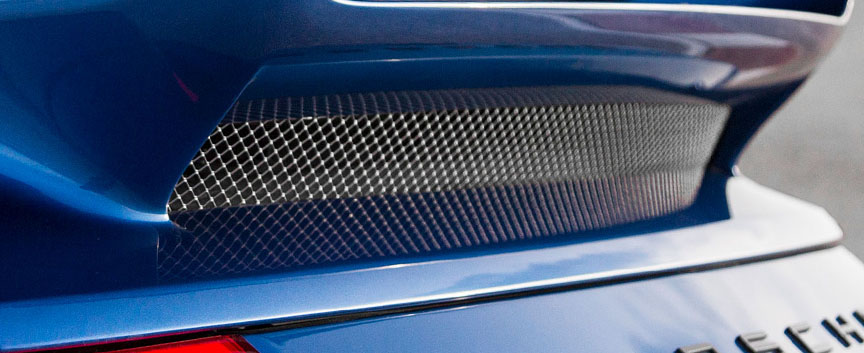
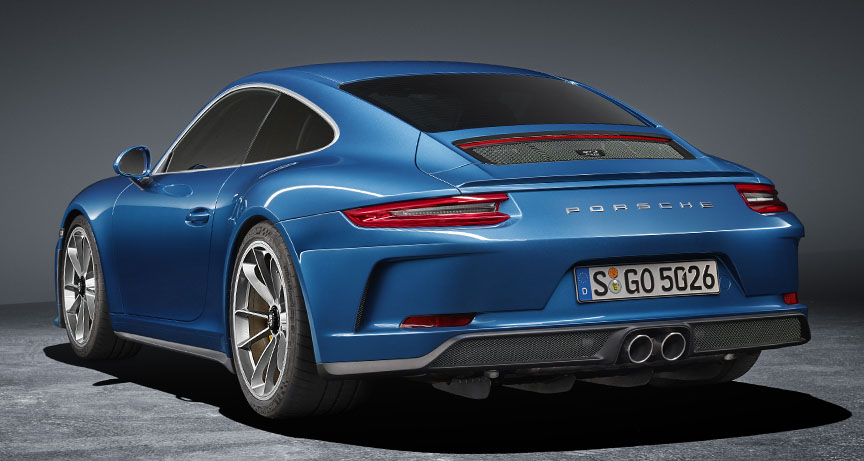
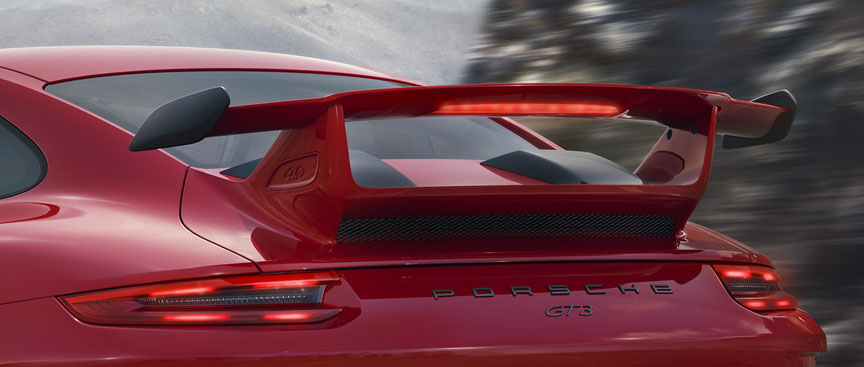
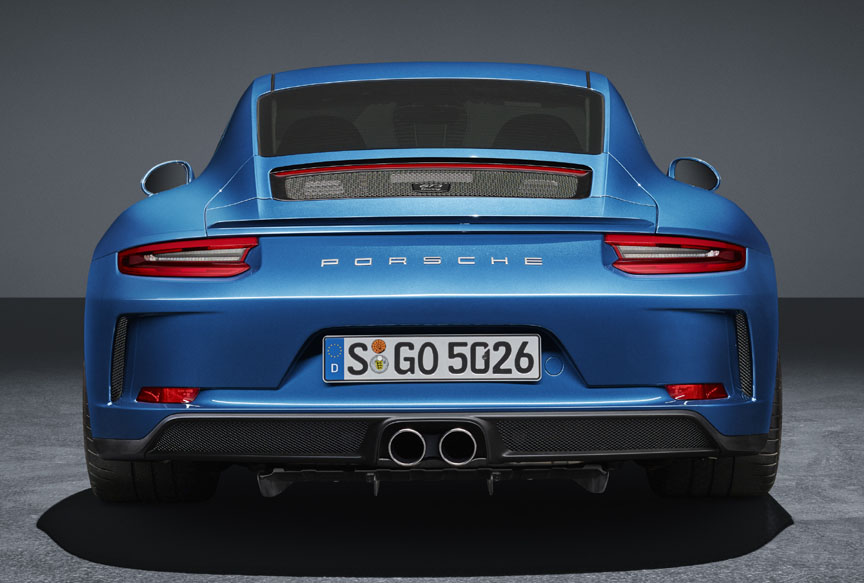
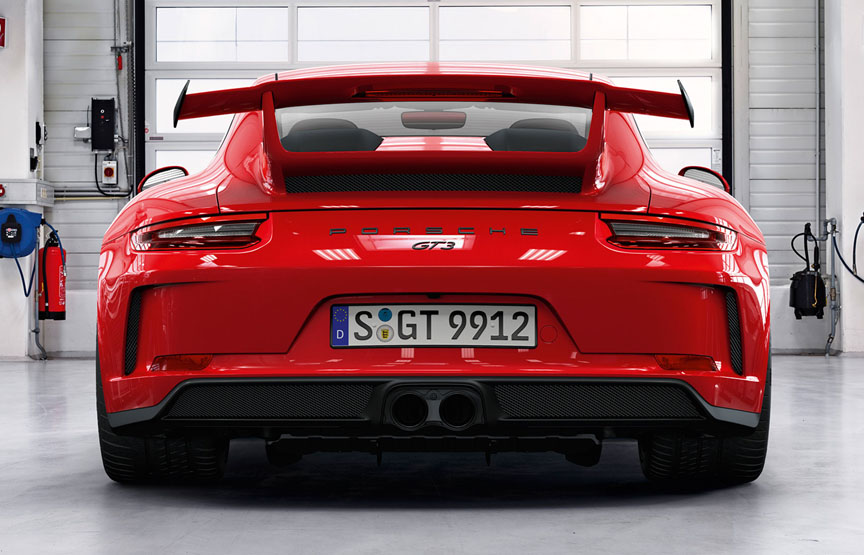
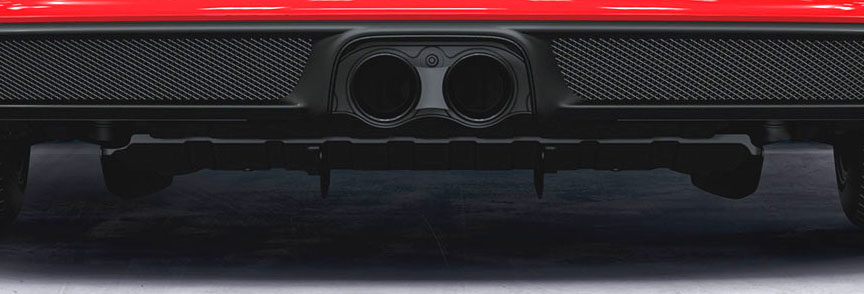
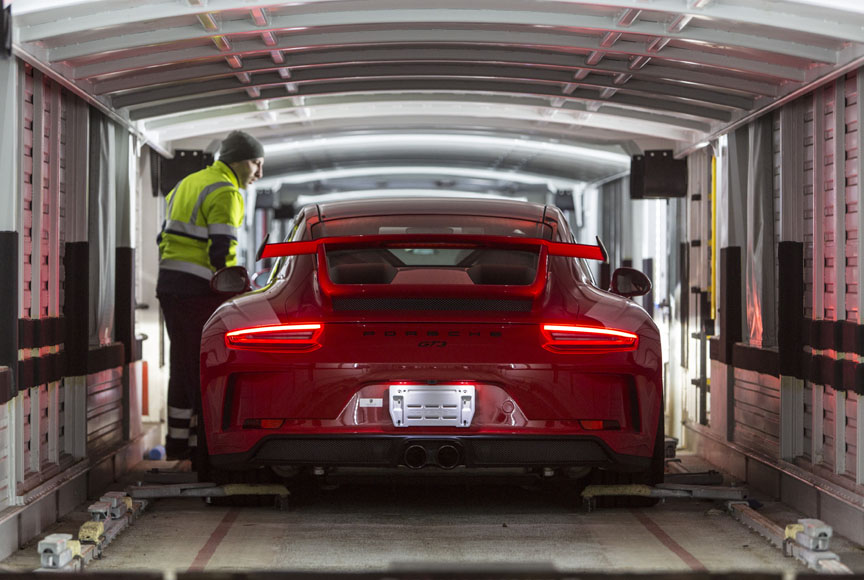
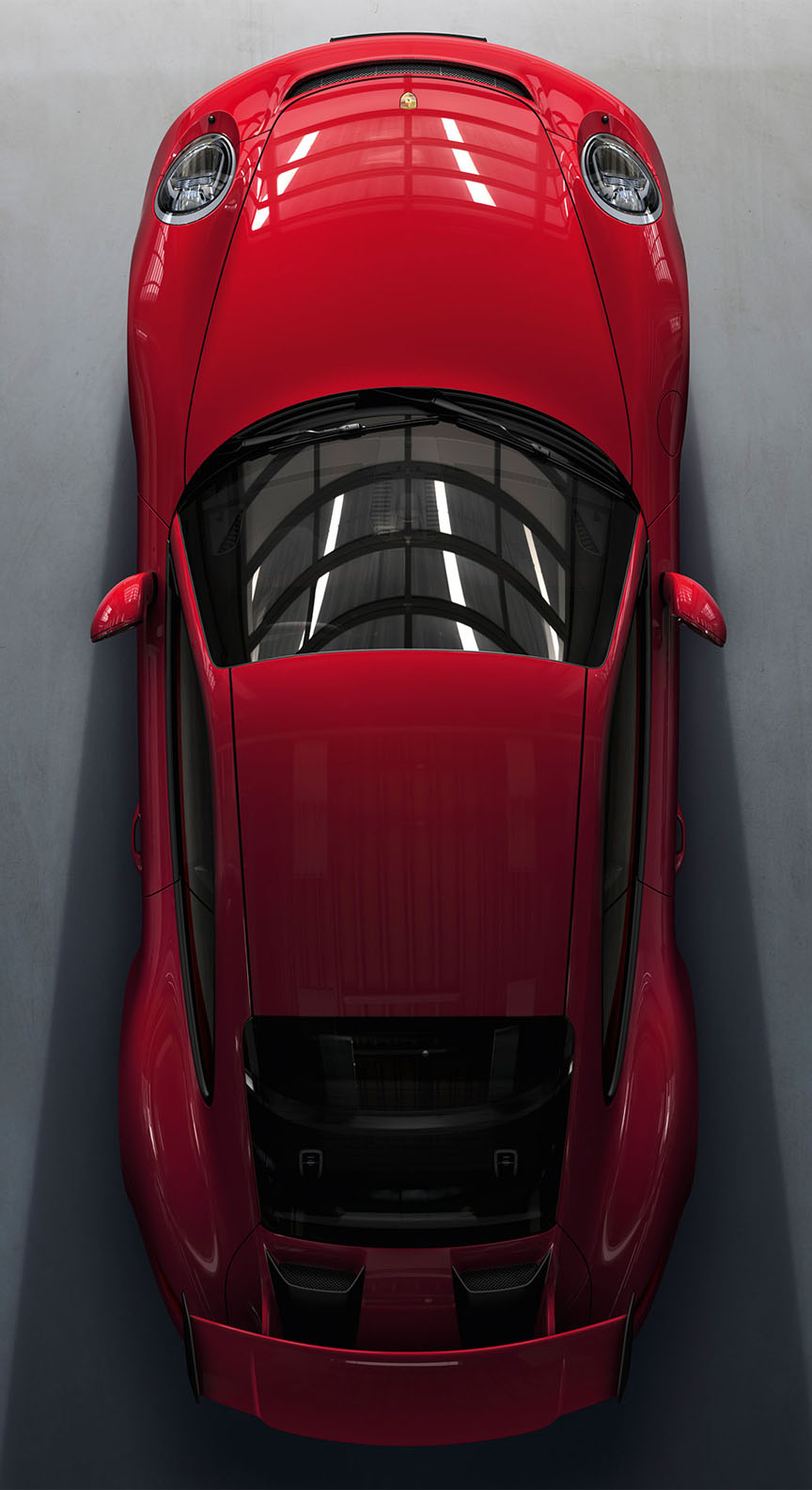
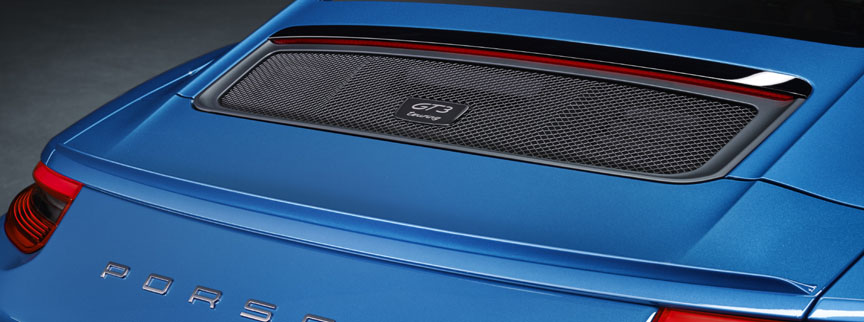
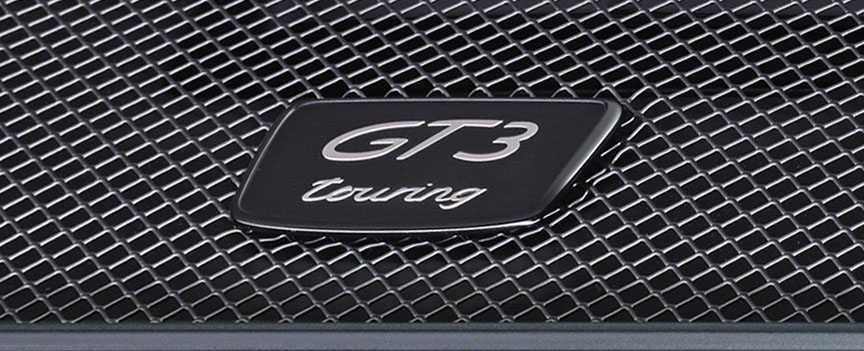
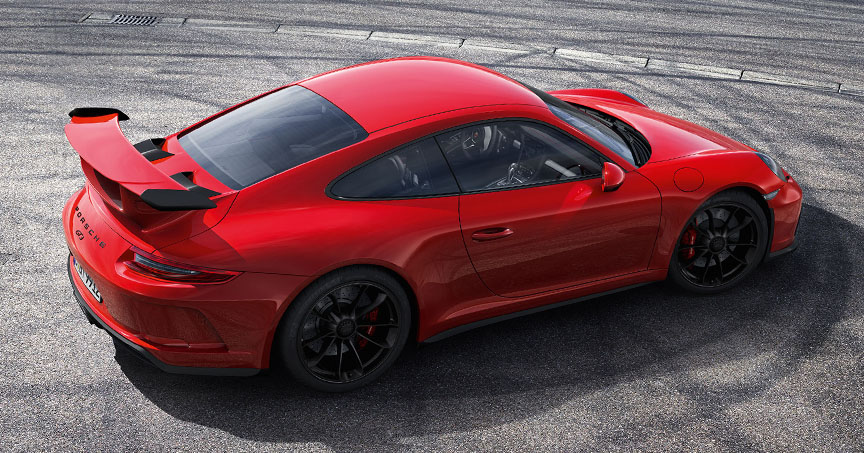
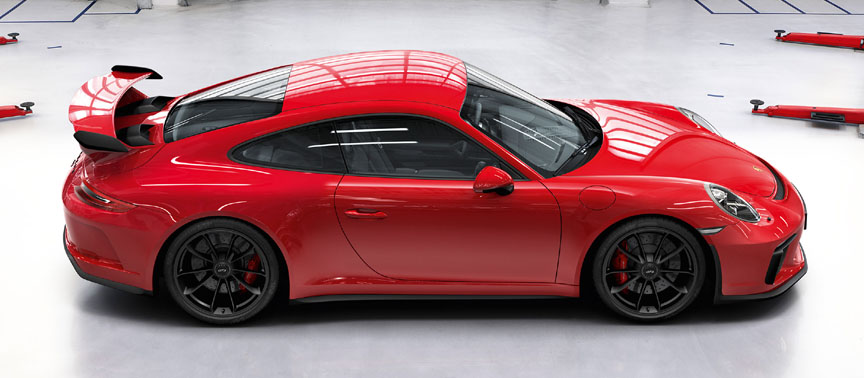
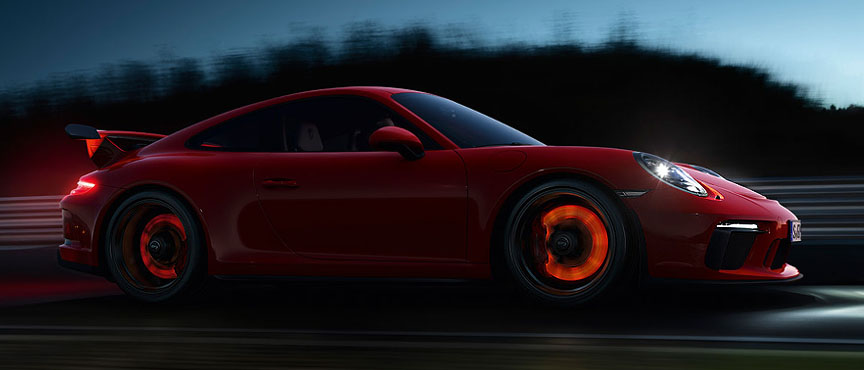

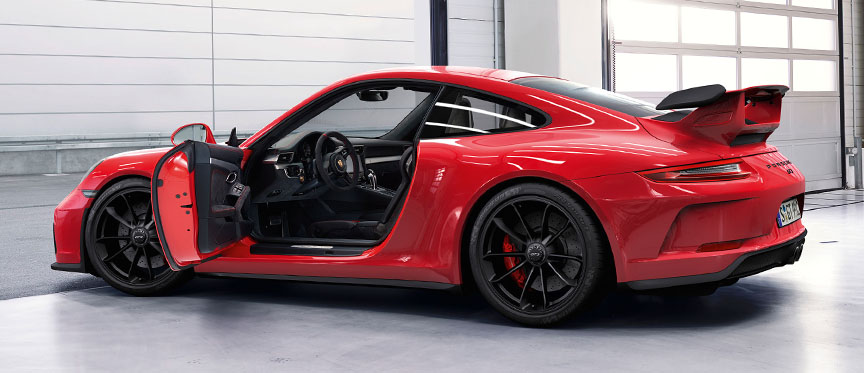
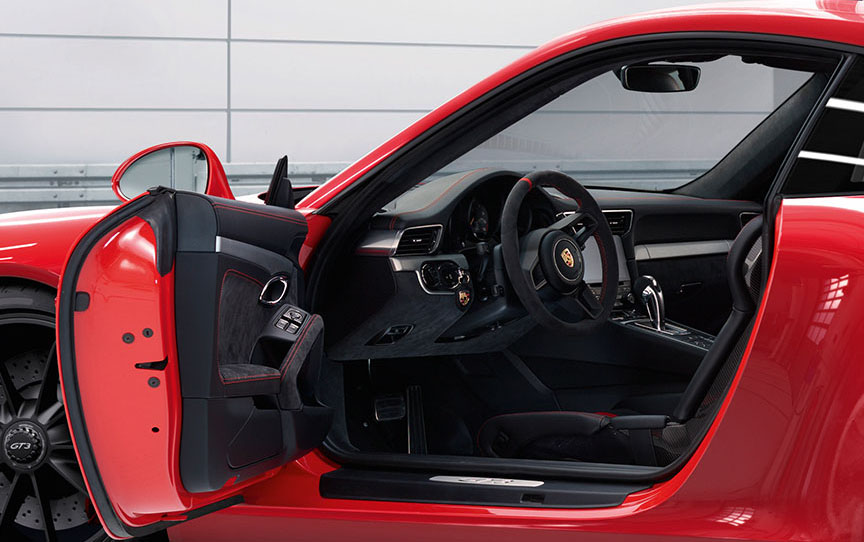
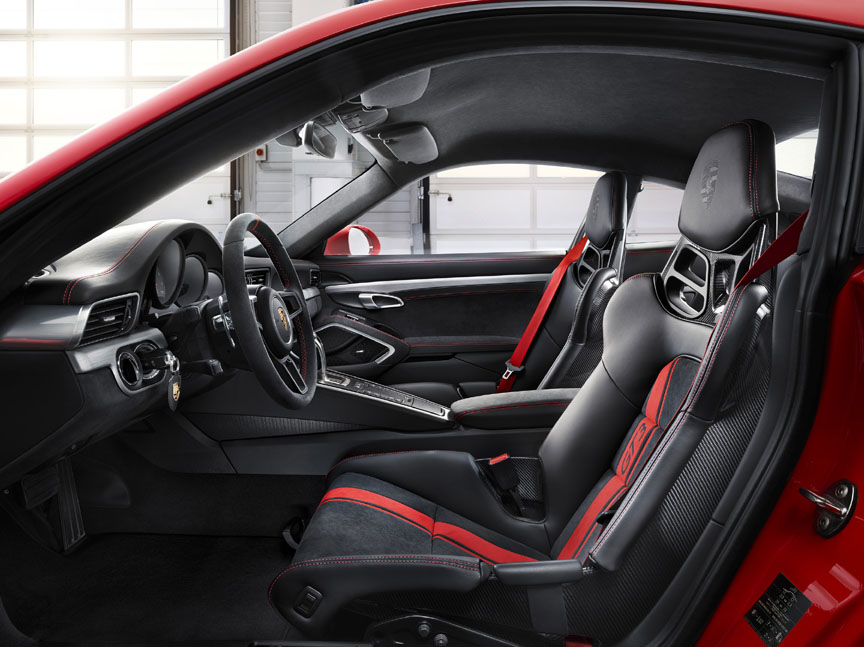
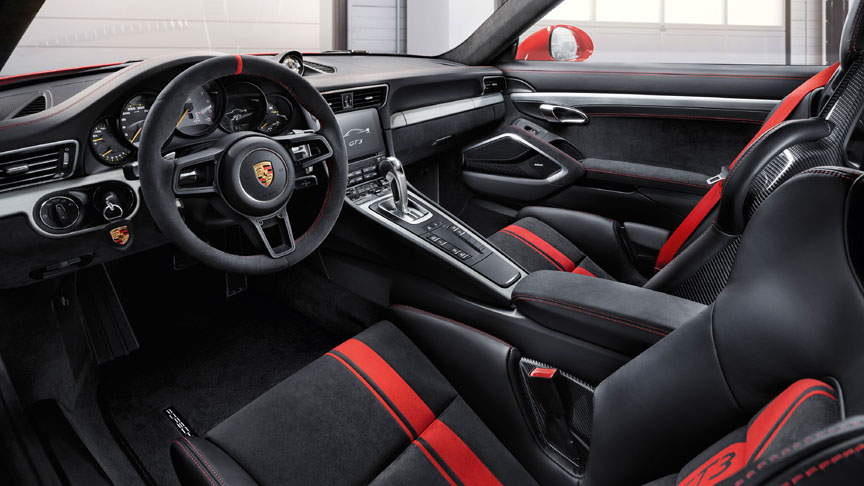
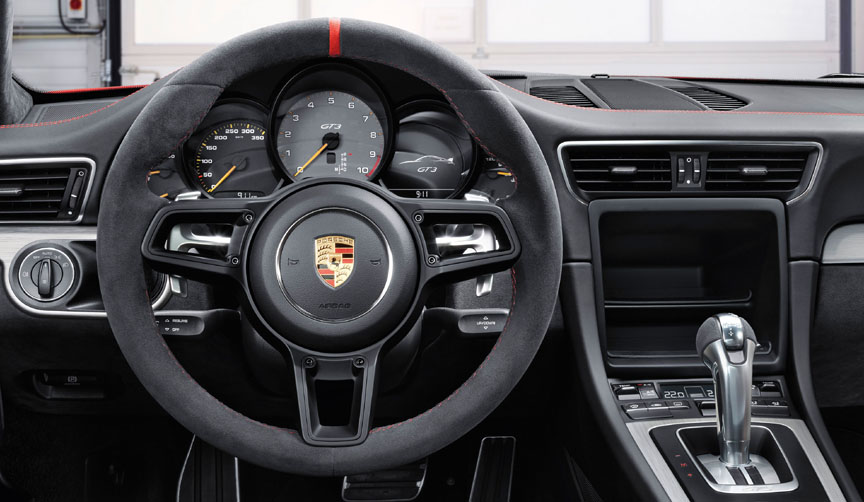
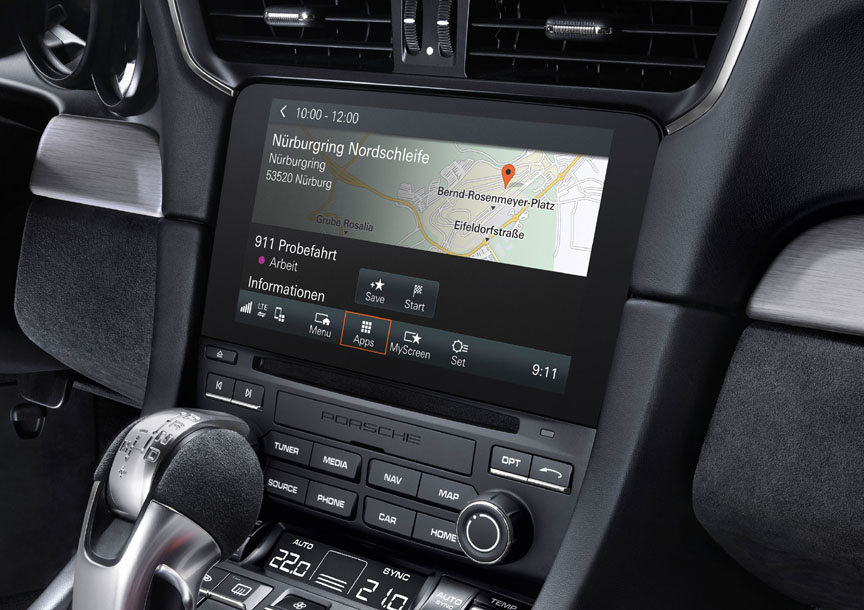
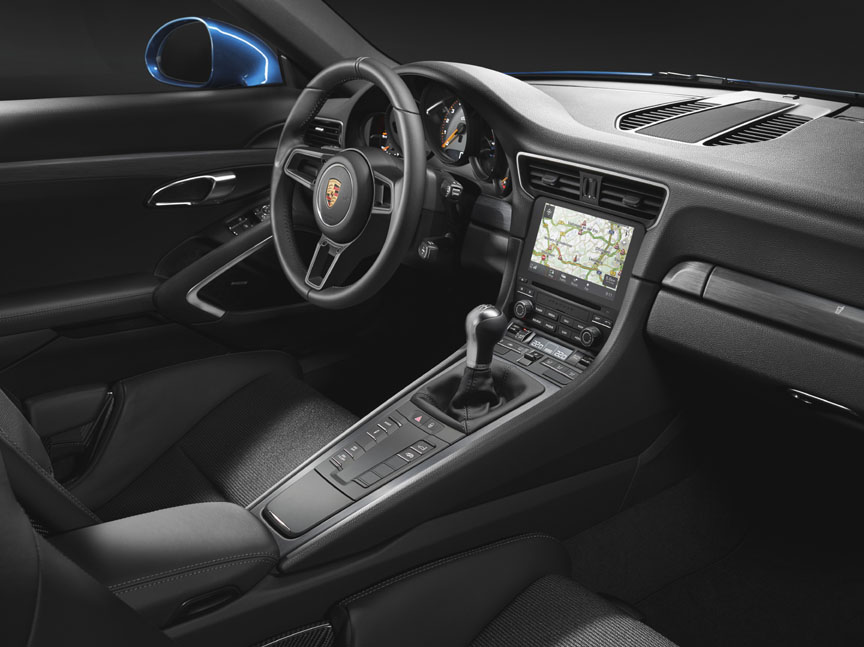
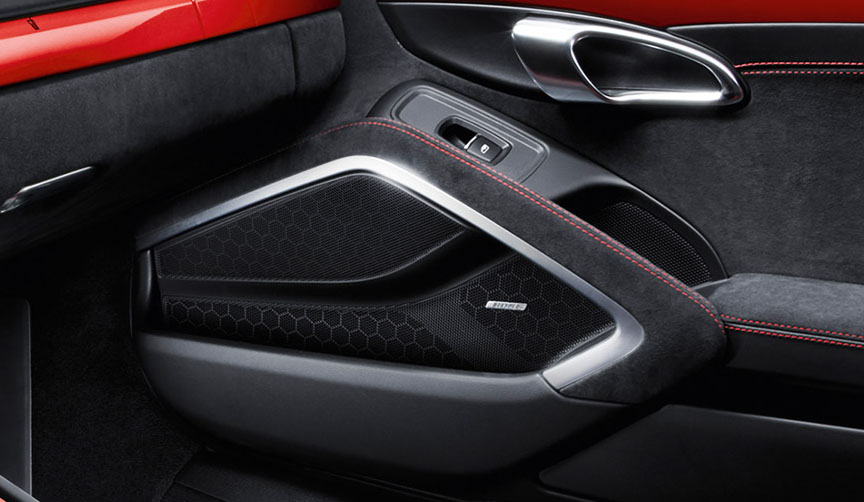
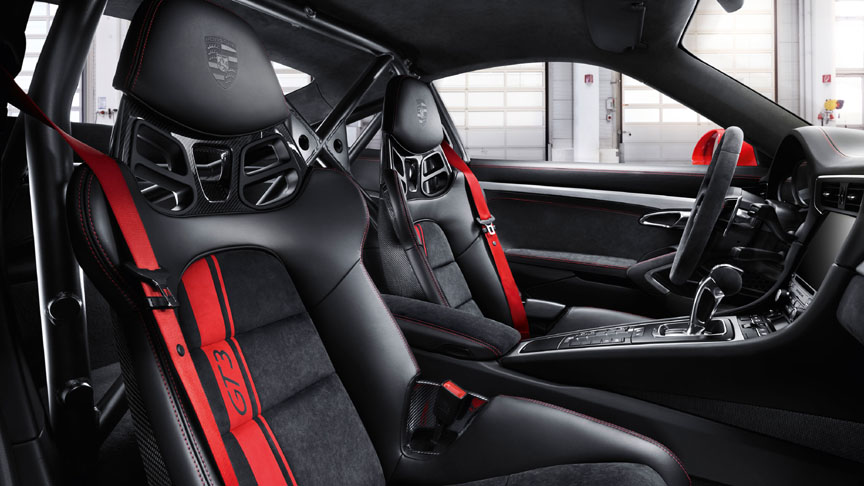
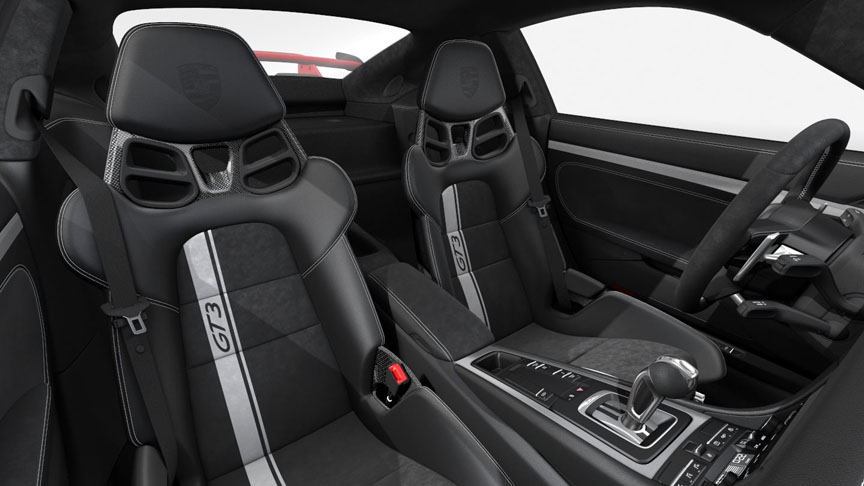
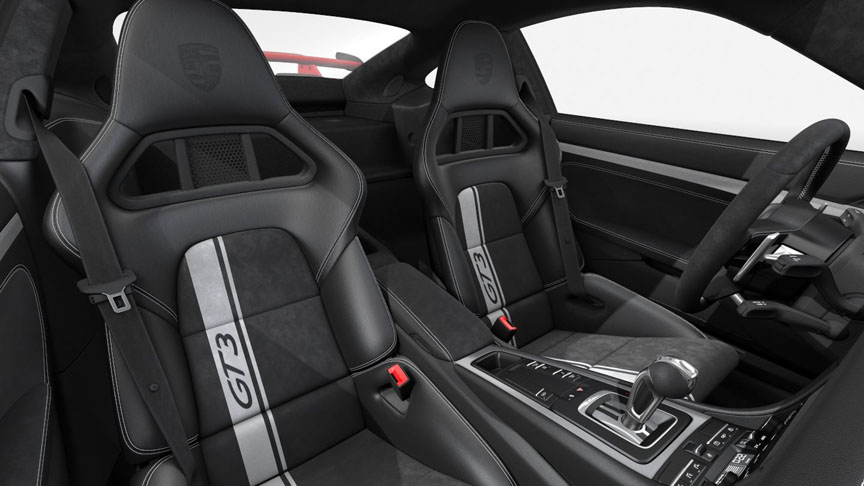
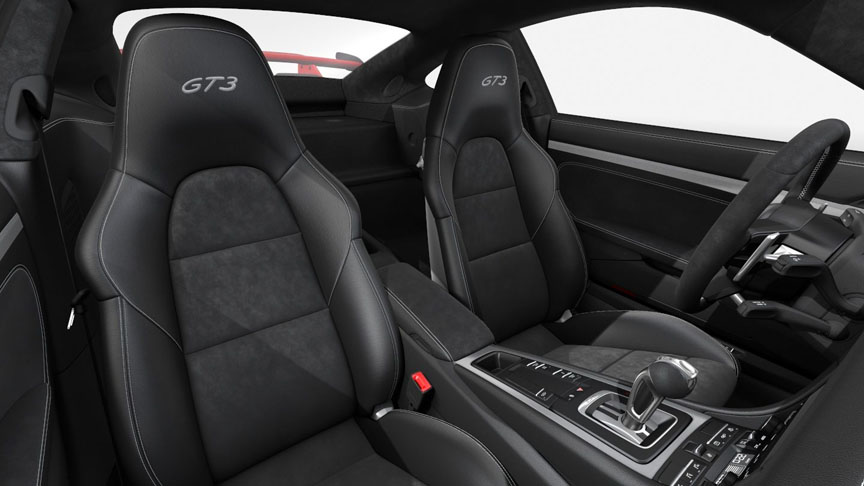
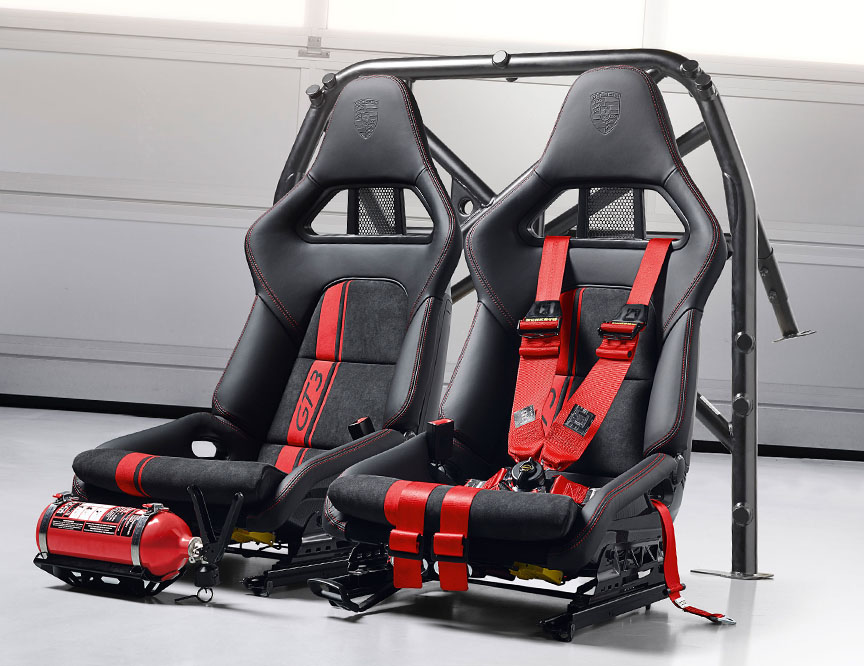
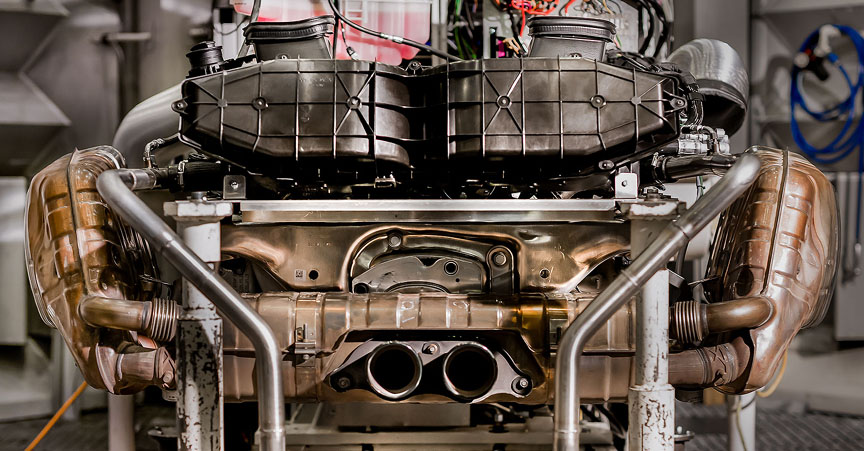
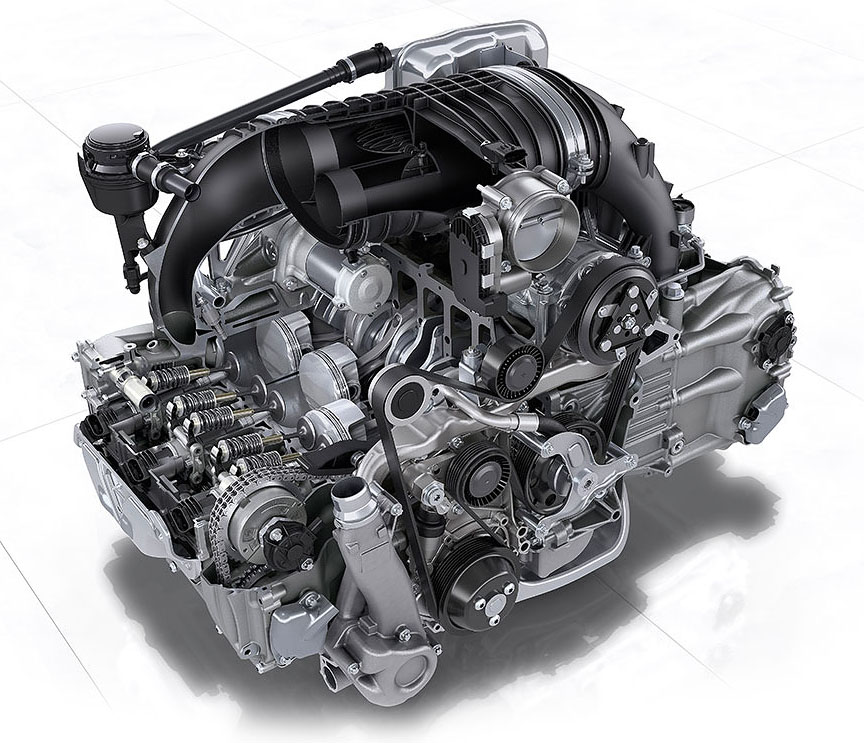
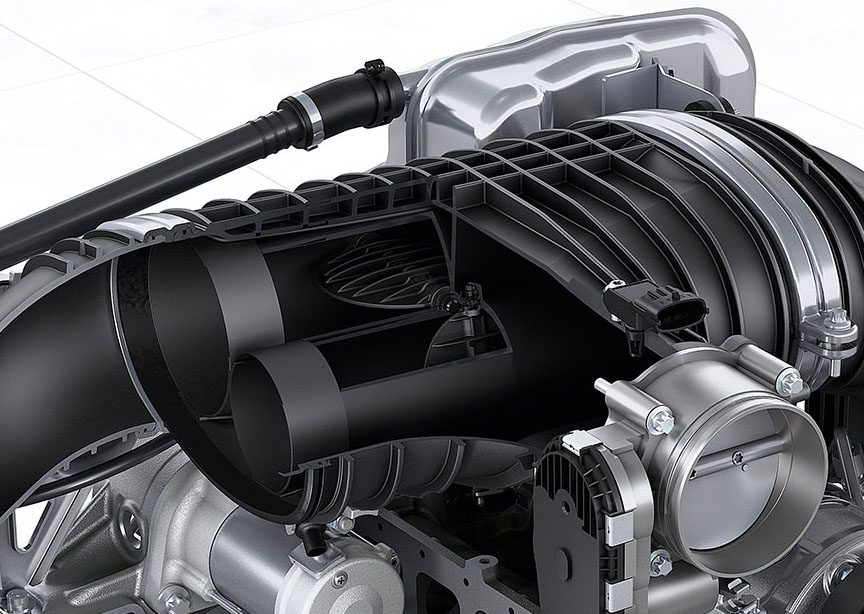
Nürburgring Nordschleife lap time 7:12.7
The May 4, 2017, press release announced that Porsche test driver Lars Kern had lapped the Nürburgring Nordschleife in just 7:12.7. It sounded rather unbelievable compared to 7:25 of the 991 GT3 3.8 and to 7:20 of the 991 GT3 RS 4.0. Due to the high downforce setting, the test car’s top speed on the track was around 177 mph/285 km/h (198 mph/318 km/h claimed top speed on the stock car). The air temperature was just 8°C/46°F which meant the normally aspirated engine could suck a lot of air, but at the same time the tarmac temperature was 14°C/57°F which meant the grip was already good enough, while the relatively cool asphalt provided some sort of cooling to the hot tyres. Michelin Pilot Sport Cup 2 and Dunlop Sport Maxx Race tyres were tested.
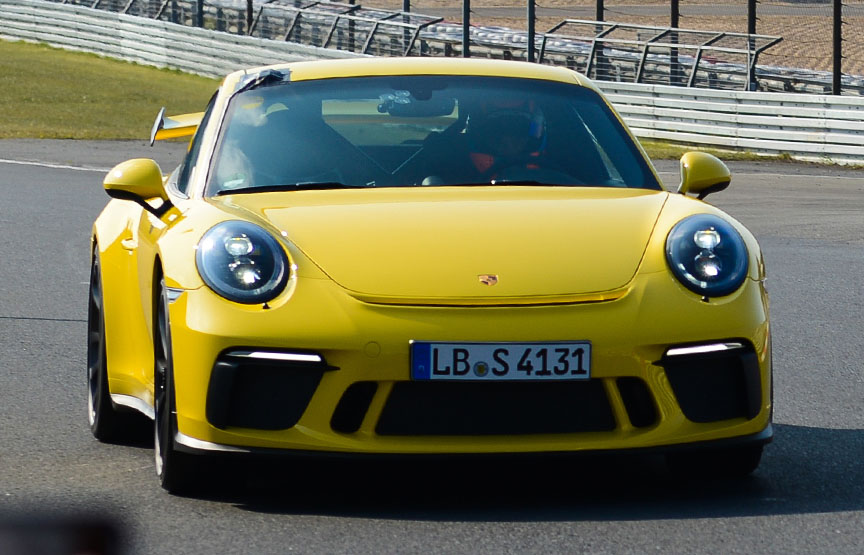
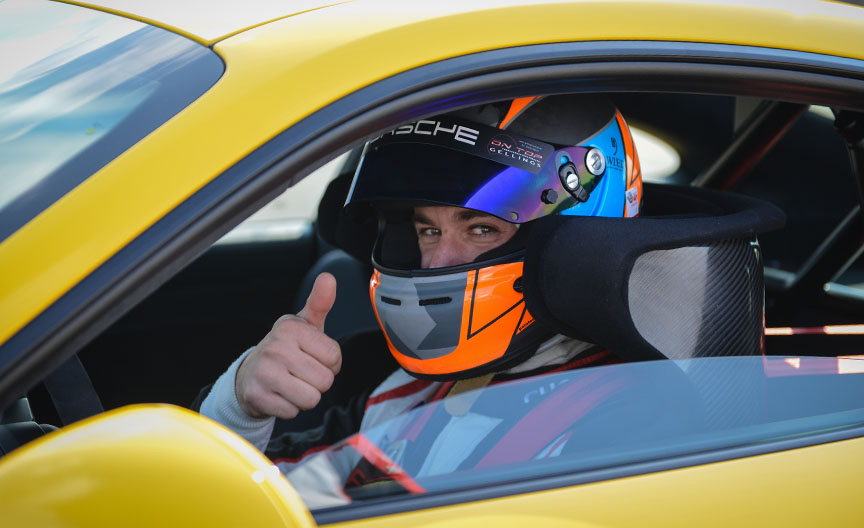
Pictures
Press Release
The Porsche 911 GT3 delivers motorsport-like performance, a systematic lightweight construction and an unfiltered driving experience. In the new generation of the radical 911, the connection between everyday driving and the racetrack is even more intense. At the heart of the latest enhancement beats a four-litre flat engine. The extremely high-revving naturally aspirated engine with 368 kW (500 hp) remains virtually unchanged from the thoroughbred 911 GT3 Cup racing car. The redesigned chassis with rear-axle steering and the systematic lightweight construction are specifically tuned to convert the engine power into superior driving dynamics. Developed on the same test track and manufactured on the same production line as the racing cars, Porsche’s motorsport technology has once again been incorporated into a road-approved sportscar.
The majority of Porsche GT drivers also like to take their sportscars for a spin on the racetrack, which is where the new Porsche 911 GT3 really comes into its own thanks to its weight-to-power ratio of 3.88 kg/kW (2.86 kg/hp). With seven-speed double-clutch transmission (PDK) as standard, which has been specifically tuned for use in the GT, the two-seater weighs in at 1,430 kg with a full fuel tank and can accelerate from 0 to 100 km/h in 3.4 seconds. Its boasts a top speed of 318 km/h. For proponents of pure unadulterated driving, Porsche also offers the 911 GT3 with a six-speed sports manual gearbox. This allows the high-performance 911 to sprint from 0 to 100 km/h in 3.9 seconds and reach a top speed of 320 km/h.
Fast on the corners, stable on the straights: Rigid chassis with rear-axle steering
The chassis of the new Porsche 911 GT3 benefits from Porsche’s motor racing experience and its tuning has been reworked for even better driving dynamics. The new two-seater sits around 25 mm lower than the 911 Carrera S. In addition to the further refined basic design, the chassis also boasts superior handling characteristics, thanks in large part to the active rear-axle steering. Depending on the speed, it steers either in the opposite or the same direction as the front wheels, thereby improving the vehicle’s agility and stability. The dynamic engine mounts and the rear differential lock also boost the car’s driving dynamics.
When it comes to its appearance, the 911 GT3 leaves little doubt as to its purpose. The dominant carbon rear wing emphasises the fact that the sportscar’s form is determined by aerodynamics. The lightweight front end and front spoiler have been optimised for an even better airflow. The aerodynamic enhancement is also evident on the lightweight rear end with exhaust air openings and on the new diffusor.
Interior: Experience centre for exceptional driving dynamics
The interior of the new high-performance sportscar is tailored to the 911 GT3 driving experience. The GT sports steering wheel with a diameter of 360 mm originates from the 918 Spyder. Both the driver and passenger experience the dynamics in Porsche Sports seats Plus with enhanced seat side bolsters and mechanical fore/aft adjustment. The seat height and backrests are adjusted electronically. As the 911 GT3 is traditionally a two-seater, the seat pans in the rear are covered.
Porsche offers three additional seat variants for the 911 GT3: The adaptive Sports seats Plus boast electrical adjustment of all seat functions (18-way). The second option is sports bucket seats with folding backrest, integrated thorax airbag and manual fore/aft adjustment. And the third variant is full bucket seats made from light carbon fibre-reinforced plastic in carbon-weave finish.
Porsche Track Precision app as standard
In addition to Porsche Communication Management (PCM) including an online navigation module with real-time traffic information, the standard equipment also includes the Connect Plus module and the Track Precision app. The Track Precision app enables 911 GT3 drivers to display, record and analyse detailed driving data on their smartphone.
Market launch and prices
The Porsche 911 GT3 is available to order now. It will be launched in Germany from mid-June 2017. Prices for the new high-performance 911 start at 152,416 euro, including VAT and country-specific equipment.


